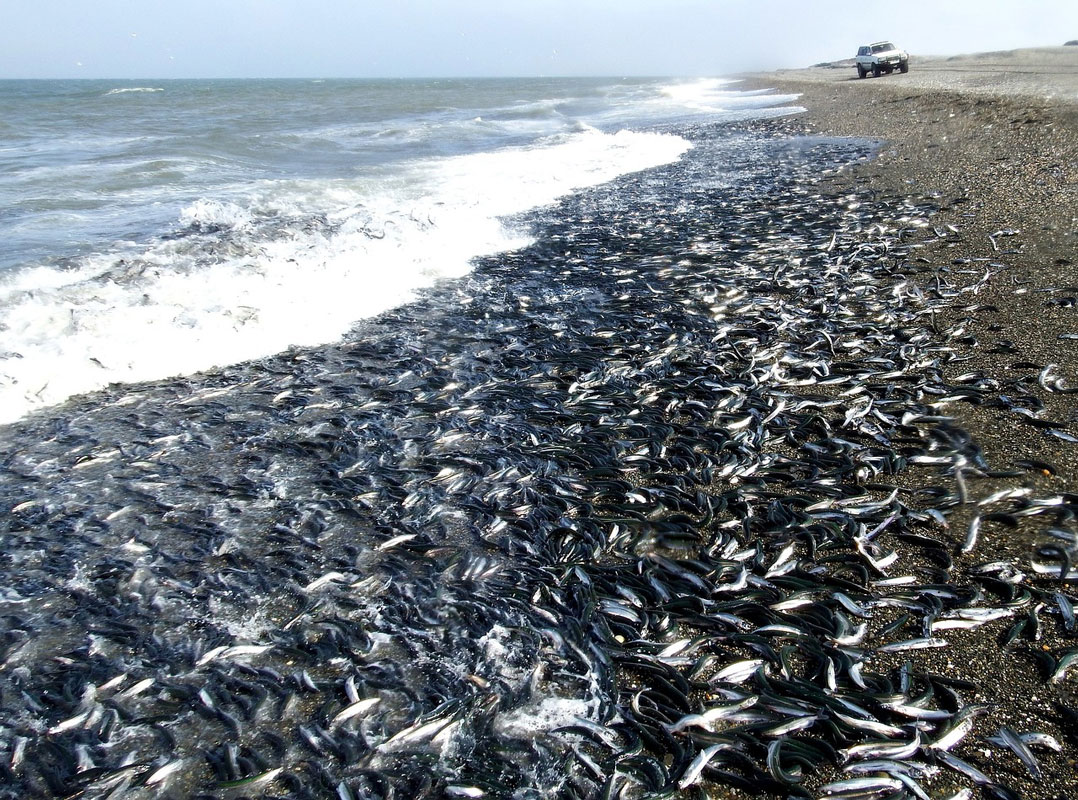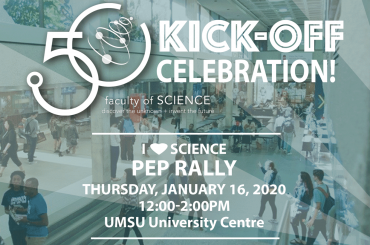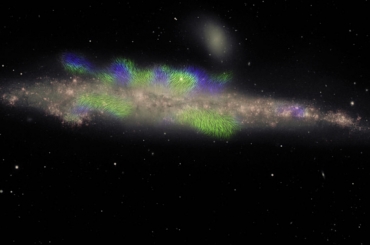Gail Davoren’s Research Sheds Light on the Role of Capelin in the North Marine Food Web
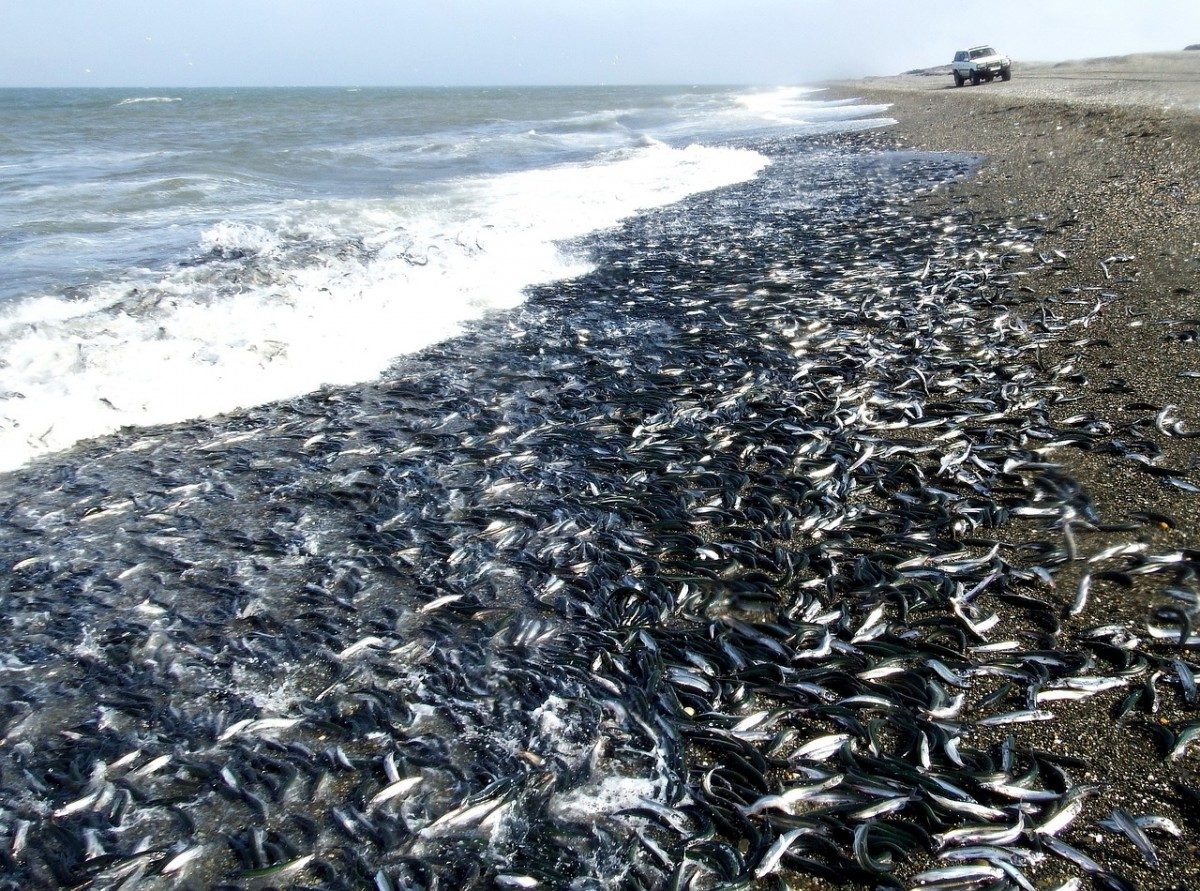
“If you think you’re too small to make a difference, you haven’t spent a night with a mosquito.” – African proverb.
A slender, silvery fish around six or seven inches long, the capelin is not what you might call a particularly impressive specimen. Yet without this little denizen of the deep, the food chain off the coastal waters of Newfoundland (amongst others) would likely collapse. Capelin provide sustenance for many marine prey species, including seabirds, whales and other, larger fish. So it is that Biological Sciences Professor Gail Davoren has spent countless hours studying the fish and its precise role in the cold, dark waters of the North Atlantic.
Davoren didn’t start out studying capelin. Growing up in Victoria, B.C. she developed an affinity for the ocean early on. Once she began university, her initial research focused on seabirds, including their foraging behavior. Since so many of the species she studied fed primarily on capelin, investigating the fish was a natural progression.
“I was really interested in birds in my undergrad in general, and then I got an opportunity to go to the Bamfield Marine Sciences Centre [on the west coast of Vancouver Island]. It was affiliated with the University of Victoria, which is where I did my undergrad. I went out there (BMSC) and did a marine birds course of all things and thought that was totally awesome. I did my Masters’ through the BMSC on marine birds, and that’s when I started getting really interested in marine predator foraging behavior. I realized when I went to do my PhD in Saint John’s, Newfoundland that I needed to know a lot more about fish behavior in order to understand how seabirds were foraging. That’s why I started doing a lot of work on capelin, because that’s the main fish they were feeding on.”
Over the course of twenty years, Davoren has learned a great deal about capelin. The fish were initially thought to do most of their spawning on beaches, driving their bodies up onto land to lay their eggs. However, she and her students have discovered that capelin actually can spawn in water less than 50 metres deep, unassociated with beaches. Since the process of spawning in deep water is relatively unknown at this point, Davoren and her students are using otolith chemistry to determine the relative contribution of both beach and deep water spawning habitats.
Otoliths are small calcium structures found inside the brain cavity of most fishes, allowing them to sense gravity and movement. Scientists analyze these “ear stones” in order to determine their birthplace, amongst other things. Davoren admits to some surprise at the relatively new direction her research has taken.
“The otolith chemistry is definitely a new thing that I’d never guessed I’d be doing. I had a really great student that was working on [otolith chemistry], her name was Alison Loeppky. Basically, what she was trying to do was simulate the temperature and salinity conditions at a beach versus a deep-water site and see whether she could distinguish the individuals that had been raised at the beach versus the deep-water habitat from the otolith chemistry. Then later, when we catch adults that are spawning, we can look at their otolith chemistry and see which ones were raised [where]. With climate change, we would expect that the beach would become too warm, and that they would start spawning in deep water, but if none of the offspring survive from the deep-water sites, then we’re going to have a major crash in the Capelin population.”
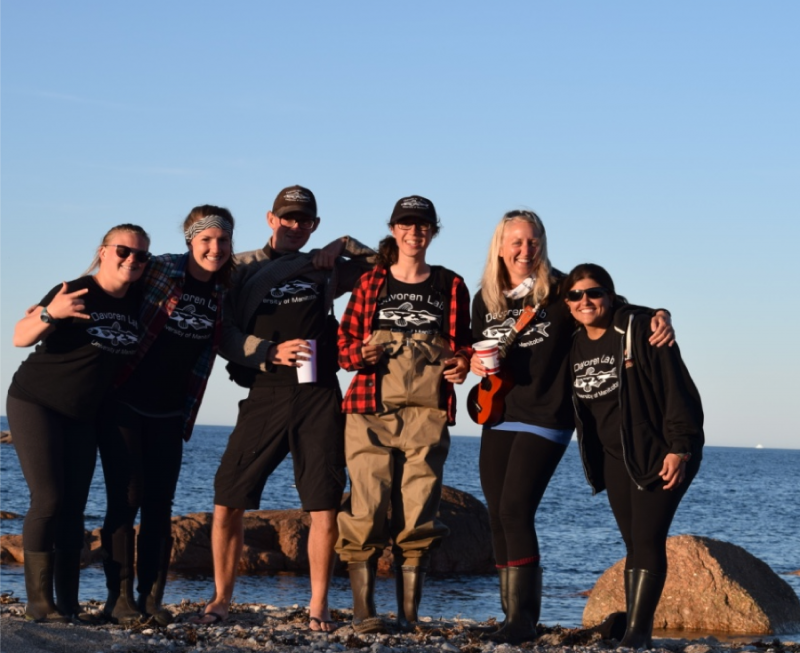
Davoren Lab students and Gail (2nd from the right) checking beach spawning sites of capelin.
Otolith chemistry isn’t the only unexpected offshoot of Davoren’s research. Two of her Masters’ students (Kelsey Johnson and Mikala Epp) have been conducting research on whales. It started with photo-identifying the various whales by taking pictures of their tails. Certain whales kept returning to the study area and in particular to the spawning sites of capelin. Johnson and Epp have managed to understand their three-dimensional underwater movement patterns, with hopes of getting more.
“Just in the last couple of years we’ve started putting tags on them. … It’s way harder than it sounds. It’s ‘salt water cowboy’ kind of stuff. It’s super fun, but there are a lot of attempts before you get a tag on. With the tag’s video, we can see what the whales are feeding on, which we predicted was going to be primarily capelin, and we were right. We’ve got two more tags on order, so we’re going to really go for it this coming summer.”
Epp, in particular, is also interested in the sounds/vocalizations whales make while foraging. She is investigating whether those sounds are related to certain prey types, or to whether or not the whales are in a group, as opposed to by themselves while they’re feeding. As Davoren sees it, whale research is simply an extension of research into the foraging behavior of marine predators.
A fascinating glimpse into their fieldwork, was documented by the lab this past year. Their video piece “One fish to bring them all,” won a top entry in the 2018 NSERC competition titled: Science, Action!
Asked what about her research is of main concern, Davoren explains:
“In [the past] 20 years, we’ve started to see more capelin in the diet of Arctic seabirds and Arctic species. Capelin are mainly a sub-Arctic or a temperate species, everybody relates that to climate change. We don’t know whether capelin have expanded their range or whether they have always been in the Arctic. I think the capelin have always been there, but just in really low abundance, based on talking to local people. I started a spawning capelin research program for two years on the east coast of Baffin Island, and found that their populations are now thriving. It could be because the ocean climate is changing, (it has been since the early 2000’s). Although that’s already eighteen years, to me that doesn’t seem very long. There was capelin maybe incidentally in predator diets or not at all, but now we’re seeing it in a whole bunch of species diets, and actually, the majority of some species diet is capelin now. That’s a major switch, in not very much time.
“I teach a fourth-year marine conservation biology course, BIOL 4220. My main concern is overexploitation. I think there’s a lot of really good research that’s come out since the early 2000’s that has shown we are overexploiting marine systems. Within Canada there are lots of examples. Atlantic cod on the east coast of Newfoundland is a good example of massive overexploitation. Their populations crashed, to the point where we set a moratorium in 1992.
“Working on the east coast of Newfoundland has really been driving a lot of my passion for understanding how ecosystems work and how to not overexploit species, but if we do, what impact is that going to have on other species within the ecosystem? In a lot of cases, we really don’t know how many fish of different species are in the ocean. For instance, we are harvesting capelin, but we don’t have a good idea how many capelin are out there. I think that’s irresponsible. I don’t think we’re removing much capelin, so it’s probably not making a big dent in the population, but we don’t have good estimates of the population size and I don’t think we should be harvesting them based on that.”
Research at the University of Manitoba is partially supported by funding from the Government of Canada Research Support Fund.
